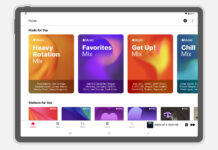Adobe has released a new computer-generated photography app for the iPhone – and one of its creators, Mark Levoy, has helped realize the impressive computer-generated photography capabilities that made some of Google’s previous Pixel cameras shine.
The new app, called Project Indigo, was released last week by Adobe Labs. It’s free and available for iPhone 12 Pro and Pro Max, iPhone 13 Pro and Pro Max, and all iPhone 14 and higher models (although Adobe recommends using the iPhone 15 Pro or later). You also don’t need to be signed into an Adobe account to use it.
“Instead of taking a single photo, Indigo takes a series of photos and merges them together to produce a high-quality photo with less noise and higher dynamic range,” the app’s description says. Indigo tries to create a natural, “mirror-like” look to photos and also offers many manual settings such as focus, shutter speed, ISO, and white balance.
To really understand what’s going on under the hood of Project Indigo, I highly recommend reading a detailed blog post by Levoy, who is now a researcher at Adobe and joined the company in 2020 to create a “universal camera app,” and Florian Kainz, a senior researcher. The post talks about why smartphone cameras are good, how computational photography works, how it creates a natural look in photos, and some details of the image processing pipeline.
Here I have to admit that I am by no means a camera expert. But even I found the post quite interesting and informative. The photos in the post look great, and there’s an album of photos on Adobe’s website that you can check out as well.
In the post, Levoy and Kainz note that Project Indigo will also serve as a testbed for technologies that can be added to other flagship products, such as a button to remove reflections. And in the future, the team plans to create an Android version, a portrait mode, and even video recording.
“This is the beginning of the journey for Adobe toward an integrated mobile camera and editor that leverages the latest advances in computer photography and artificial intelligence,” Levoy and Kainz say. “We hope that Indigo will appeal to casual mobile photographers who want a natural DSLR-like look to their photos, including when viewed on large screens; advanced photographers who want manual controls and the highest possible image quality; and anyone who enjoys playing with new photographic possibilities, both casual and serious.”









